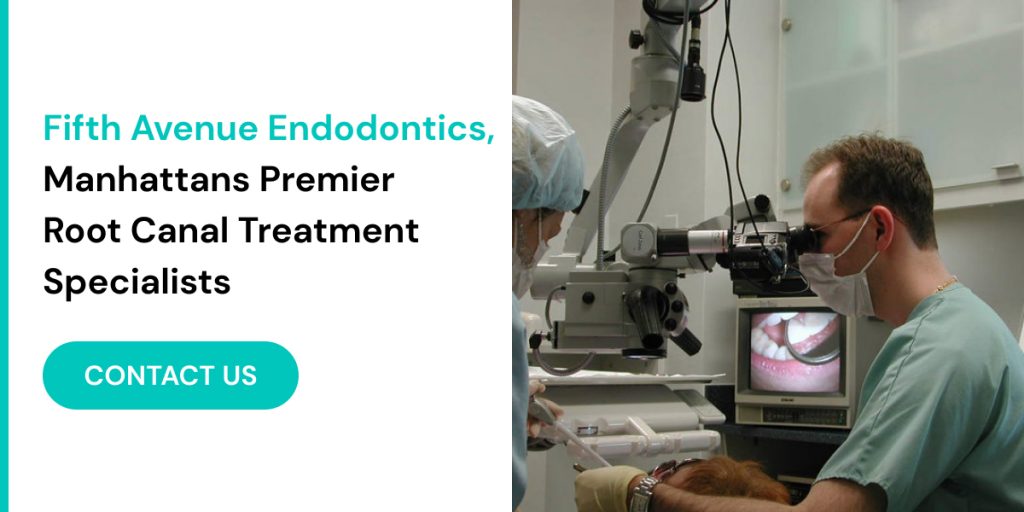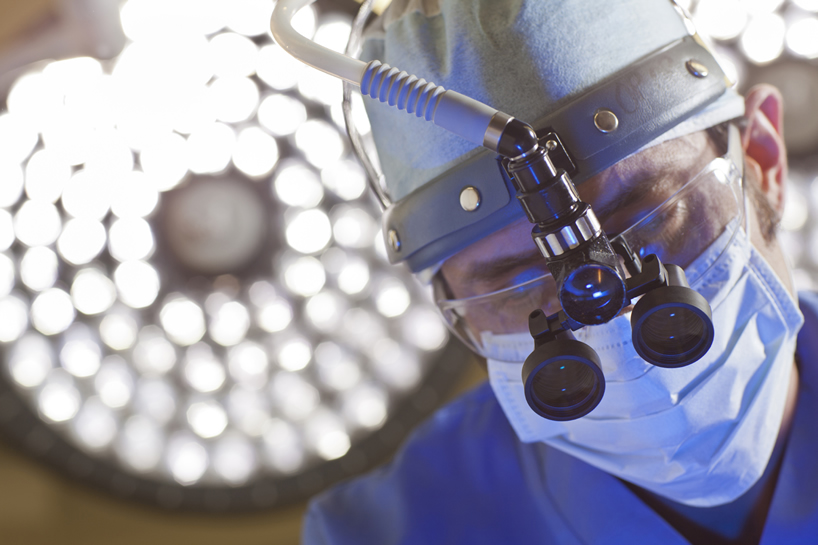In the bustling city of New York, finding an Endodontist near me NYC is essential for individuals facing complex and often urgent dental issues. The dense urban environment, combined with the fast-paced lifestyle of its residents, can make it difficult to manage severe dental conditions. One particularly challenging condition that requires specialized care is a fungal infection of the dental pulp. This infection, while relatively rare, presents a significant problem for those affected, as it can lead to severe pain, swelling, and potential tooth loss if left untreated.
This blog post delves into the crucial role that endodontics plays in diagnosing and treating these fungal infections. By examining the advanced methods and techniques employed by experts like Dr. Iofin at Fifth Avenue Endodontics, we can gain a deeper understanding of how endodontists address such complex cases. From detailed diagnostic procedures to the latest treatment technologies, Dr. Iofin and his team utilize their extensive expertise to provide effective solutions for managing and curing fungal infections of the pulp. Understanding these processes can help patients make informed decisions about their dental health and seek appropriate care when needed.
What Are Fungal Infections of the Pulp?
Fungal infections of the dental pulp, though relatively rare, represent a serious and complex dental condition that demands prompt and effective treatment. The dental pulp is the soft tissue located inside the tooth, encompassing nerves, blood vessels, and connective tissue. This vital component of the tooth is responsible for nourishing the tooth and maintaining its health and sensitivity.
When fungi invade the pulp, they disrupt this delicate balance, leading to inflammation and infection. The fungi can enter the pulp through various means, often following an initial injury or deep cavity that compromises the tooth’s protective barriers. Once inside, the fungi can proliferate, causing significant damage to the pulp and surrounding structures.
The symptoms of a fungal pulp infection can be severe and include persistent pain that often worsens with temperature changes, such as sensitivity to hot or cold foods and beverages. Patients might also experience swelling of the gums, which can extend to the face, and in some cases, the infection can lead to the formation of abscesses. This inflammation and infection can compromise the tooth’s functionality and, if left untreated, may result in tooth loss.
Given the potential for serious complications, including systemic spread of the infection, it’s crucial for patients experiencing these symptoms to seek immediate care. An Endodontist near me NYC, like Dr. Iofin at Fifth Avenue Endodontics, is equipped with the expertise and advanced diagnostic tools necessary to accurately diagnose and effectively treat fungal infections of the pulp. By addressing these infections early, endodontists can prevent more severe consequences and preserve the health and function of the affected tooth.
Identifying Fungal Infections in Endodontics
Diagnosing a fungal infection of the dental pulp involves a comprehensive and methodical approach, as these infections can be challenging to identify and treat. The process begins with a thorough clinical examination conducted by an experienced endodontist. During this examination, the endodontist assesses symptoms reported by the patient, which may include persistent tooth pain, sensitivity to heat or cold, and visible swelling of the gums or face. These symptoms are critical indicators of a potential infection but are not exclusive to fungal infections, making further diagnostic tests necessary.
To accurately diagnose a fungal infection, advanced imaging and microbiological tests are often required. X-rays are commonly used to visualize the internal structures of the tooth and surrounding areas. They help identify signs of infection, such as changes in the bone structure or the presence of abscesses. However, X-rays alone may not provide sufficient detail to determine the exact nature of the infection.
In more complex cases, additional imaging techniques like cone-beam computed tomography (CBCT) can offer three-dimensional views of the tooth and its internal structures. This detailed imaging is valuable for detecting subtle changes and assessing the extent of the infection.
Microbiological tests are also crucial for confirming a fungal infection. These tests involve taking samples from the pulp chamber or root canals and analyzing them in a laboratory to identify the specific fungal species causing the infection. This step is essential for selecting the most effective treatment plan.
An Endodontist near me NYC, such as Dr. Iofin at Fifth Avenue Endodontics, utilizes a combination of these diagnostic tools and techniques to ensure an accurate diagnosis. This comprehensive approach enables the development of a tailored treatment plan that effectively addresses the fungal infection and restores the health of the affected tooth.

Endodontic Treatment for Fungal Infections
Once a fungal infection of the dental pulp is confirmed, initiating endodontic treatment is crucial to eliminating the infection and restoring the tooth’s health. This treatment involves several precise and methodical steps to ensure the infection is thoroughly addressed and the tooth is preserved. Here’s a detailed overview of the process an endodontist follows to manage and treat fungal infections:
- Access Opening: The first step in treating a fungal infection involves creating an access opening to reach the infected pulp. This is done by removing a portion of the tooth’s structure, typically from the crown, to gain direct access to the pulp chamber and root canals. This access is essential for the endodontist to thoroughly clean and disinfect the interior of the tooth. The precision with which this step is performed is critical, as it ensures that all infected areas are reached and prepared for subsequent treatment.
- Disinfection: Disinfection of the root canals is a cornerstone of successful endodontic treatment for fungal infections. After accessing the infected pulp, the endodontist uses specialized antifungal agents to eradicate the fungi present within the canals. This process involves irrigating the canals with solutions that are specifically designed to target and eliminate fungal organisms. These solutions often include a combination of antifungal agents and antimicrobial irrigants that help in dissolving and flushing out the infected tissue. The endodontist may also use mechanical tools to aid in cleaning and shaping the canals, ensuring that the entire canal system is thoroughly disinfected.
- Canal Filling: Once the cleaning and disinfection are complete, the next step is to fill the canals with a biocompatible material. This material, known as gutta-percha, is used to seal the root canals and prevent future infections. The filling material is carefully inserted into the cleaned canals and compacted to ensure a tight seal. This step is crucial for maintaining the tooth’s integrity and function. A proper seal prevents bacteria and fungi from re-entering the canal system and causing a recurrence of the infection.
- Permanent Restoration: The final step in the treatment process involves placing a permanent restoration to protect and restore the tooth. Typically, this involves placing a crown over the tooth. The crown not only provides structural support and restores the tooth’s function but also protects it from future damage or reinfection. The endodontist works closely with a prosthodontist or dental lab to ensure that the restoration matches the natural appearance of the tooth and fits comfortably.
By following these steps, an endodontist ensures that a fungal infection is effectively managed, restoring the tooth to health and function. At practices like Fifth Avenue Endodontics, Dr. Iofin employs these advanced techniques with precision to deliver optimal outcomes for patients dealing with fungal infections of the pulp.
Preventive Measures and Long-Term Care
Preventing fungal infections of the dental pulp involves a proactive approach to oral hygiene and regular dental care. These measures are essential to maintaining overall dental health and minimizing the risk of infections.
- Maintaining Good Oral Hygiene: Good oral hygiene is the cornerstone of preventing dental infections, including fungal infections. This includes daily brushing and flossing to remove plaque and food particles that can contribute to the development of dental problems. Brushing should be done twice a day with fluoride toothpaste to strengthen tooth enamel and reduce bacterial growth. Flossing daily helps to clean between the teeth and along the gumline, areas where a toothbrush might not reach effectively. Additionally, using an antimicrobial mouthwash can further reduce the risk of infections by targeting bacteria and fungi in the mouth.
- Regular Dental Check-Ups: Routine dental check-ups are vital for early detection and prevention of dental issues. For patients in New York, consulting an Endodontist near me NYC provides the benefit of specialized care tailored to individual needs. Regular visits allow for professional cleanings that remove tartar buildup, which can contribute to gum disease and infections. During these check-ups, your dentist or endodontist can identify potential problems before they become severe, such as signs of infection or decay that might lead to more significant issues.
- Personalized Preventive Advice: An endodontist can offer personalized preventive care advice based on your specific oral health needs. This might include recommendations for specialized dental products or techniques to enhance your oral hygiene routine. For instance, if you have a history of dental issues or specific risk factors, your endodontist can provide targeted strategies to address those concerns and reduce the likelihood of fungal infections.
- Importance of Follow-Up Care: At Fifth Avenue Endodontics, Dr. Iofin emphasizes the critical role of follow-up care in ensuring that treated infections do not recur. Regular follow-up appointments are essential for monitoring the health of the treated tooth and ensuring that the endodontic treatment was successful. These visits allow Dr. Iofin to assess the condition of the tooth, check for any signs of lingering infection, and address any potential issues before they escalate.
By adhering to these preventive measures and maintaining consistent follow-up care, patients can significantly reduce the risk of fungal infections and other dental complications. This proactive approach helps to ensure long-term dental health and preserve the function and integrity of your teeth.
The Role of Technology in Treatment
Advancements in technology have revolutionized the management and treatment of fungal infections of the dental pulp, providing endodontists with sophisticated tools to ensure precise and effective care. These technological innovations have greatly enhanced diagnostic accuracy and treatment outcomes, transforming how complex dental conditions are addressed.
- Digital Imaging: Digital imaging is a cornerstone of modern endodontic practice. Unlike traditional X-rays, digital radiography produces high-resolution images with minimal radiation exposure. These images provide detailed views of the tooth’s internal structures, allowing endodontists to identify the presence and extent of fungal infections with greater precision. Digital imaging also facilitates real-time analysis, enabling immediate assessment and adjustment of treatment plans as needed.
- Cone-Beam Computed Tomography (CBCT): For more complex cases, Cone-Beam Computed Tomography (CBCT) offers a three-dimensional view of the tooth and surrounding bone structures. CBCT scans provide detailed, volumetric images that reveal intricate details of the root canal system, including the presence of microfractures, accessory canals, and the full extent of the infection. This comprehensive view is crucial for accurately diagnosing and treating fungal infections, ensuring that no part of the infection is missed.
- Advanced Irrigation Systems: In addition to imaging technologies, advancements in irrigation systems have improved the disinfection process. Modern endodontic practices use automated irrigation systems that deliver precise quantities of cleaning solutions to thoroughly disinfect the root canals. These systems enhance the effectiveness of antifungal agents, ensuring that the entire canal system is adequately treated.
- Enhanced Treatment Planning: Technology also plays a significant role in treatment planning. Software tools assist endodontists in creating detailed treatment plans based on digital images and CBCT scans. These tools help in predicting the outcome of various treatment approaches and in selecting the most effective methods for managing fungal infections.
Dr. Iofin and the team at Fifth Avenue Endodontics are committed to leveraging these technological advancements to provide the highest level of care for patients dealing with fungal infections of the pulp. By incorporating the latest innovations, they ensure that each patient receives effective, efficient, and personalized treatment, ultimately enhancing their overall dental health and well-being.

Conclusion
Understanding the role of endodontics in treating fungal infections of the pulp is essential for those facing this challenging condition. Finding an Endodontist near me NYC, like Dr. Iofin at Fifth Avenue Endodontics, can make a significant difference in the outcome of the treatment. By employing advanced techniques and technologies, endodontists can effectively manage and treat these infections, ensuring the best possible results for their patients.
For anyone experiencing symptoms of a fungal infection, seeking professional care from a qualified endodontist is crucial. The expertise and resources available at Fifth Avenue Endodontics can help you regain your dental health and maintain a healthy, functional smile.

